
OceansArt.US
|
Santa Cruz Island is one of the Galápagos Islands with an area of 986 km² and a maximum altitude of 864 metres. Named after the Holy Cross, its English name (IndefatigabSle) was given after a British vessel (HMS Indefatigable). Santa Cruz hosts the largest human population in the archipelago at the town of Puerto Ayora. The Charles Darwin Research Station and the headquarters of the Galápagos National Park Service are located here. The GNPS and CDRS jointly operate a tortoise breeding center where these chelonians are prepared to be reintroduced to their natural habitat. The Highlands of Santa Cruz offer an exuberant vegetation and are famous for the lava tunnels and large tortoise populations . Black Turtle Cove is surrounded by mangroves which sea turtles, rays and small sharks sometimes use as a mating area. Cerro Dragón, known for its flamingo lagoon, is also located here, and along the trail one may see land iguanas foraging.
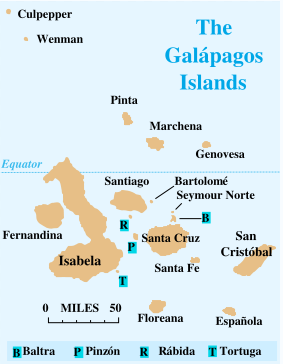
The Galápagos Islands (Official name: Archipiélago de Colón; other Spanish names: Islas de Colónumio or Islas Galápagos, from galápago, "saddle"—after the shells of saddlebacked Galápagos tortoises) are an archipelago of volcanic islands distributed around the equator, 965 kilometres (about 600 miles) west of continental Ecuador in the Pacific Ocean (1° S 91° W). The group consists of 13 main islands, 6 smaller islands, and 107 rocks and islets. The islands are located at a geological hot spot, a place where the earth's crust is being melted from below by a mantle plume, creating volcanos. The oldest island is thought to have formed between 5 and 10 million years ago. The youngest islands, Isabela and Fernandina, are still being formed, with the most recent volcanic eruption in 2005. It is one of the few places in the world without an indigenous population. The Galápagos archipelago is a province of Ecuador, a country in northwestern South America, and the islands are all part of Ecuador's national park system. They are famed for their vast number of endemic species and the studies by Charles Darwin during the voyage of the Beagle that contributed to the inception of Darwin's theory of evolution by natural selection.
(Adapted from: Galapagos (2008): Wikipedia, The Free Encyclopedia)
See all the free photos, including other photos of Ecuador and Galapagos by going to the Photo Catalog. Click on any picture for a FREE larger version. Read the licensing rules (REVISED) for your needs. There are hundreds of high quality free photos: use the Google/site search engine. See our digital photography tips : DOs and Don'ts; Choosing a Camera and Accessories , Downloading Photos, and Editing Photos. Visit TechnologySite.org for free photos and lists of inventions and technology and learn Climate Change Facts to see for yourself if your area is at risk from global warming or global cooling.
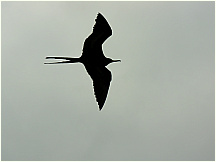 01puertoayora.jpg Perfect silhouette of a frigate bird at the entrance to harbor of Puerto Ayora, on Santa Cruz, Galapagos Islands. |
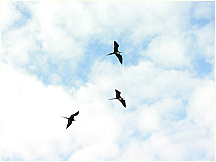 02puertoayora.jpg Frigate birds hovering at the entrance to harbor of Puerto Ayora, on Santa Cruz, Galapagos Islands. |
|
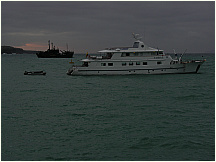 04puertoayora.jpg SEA SHEPHERD vessel, behind cruise ship CORAL II and its panga, at anchor in harbor of Puerto Ayora, on Santa Cruz, Galapagos Islands. |
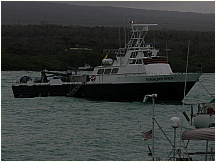 05puertoayora.jpg GUADALUPE RIVER vessel, at anchor in harbor of Puerto Ayora, on Santa Cruz, Galapagos Islands. |
|
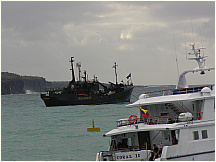 06puertoayora.jpg SEA SHEPHERD vessel, behind cruise ship CORAL II, at anchor in harbor of Puerto Ayora, on Santa Cruz, Galapagos Islands. |
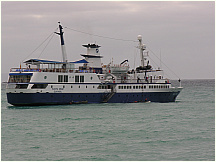 07puertoayora.jpg Cruise ship SANTA CRUZ, registered in Guyaquil, Ecuador in harbor of Puerto Ayora, on Santa Cruz, Galapagos Islands. |
|
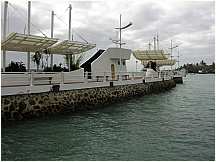 08puertoayora.jpg Breakwater and pier in harbor of Puerto Ayora, on Santa Cruz, Galapagos Islands. |
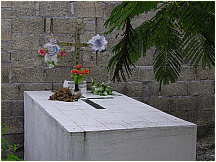 09puertoayora.jpg Tomb in city cemetery on Avenida Charles Darwin in Puerto Ayora, on Santa Cruz, Galapagos Islands |
|
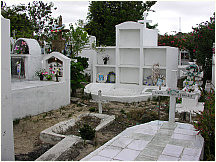 10puertoayora.jpg City cemetery on Avenida Charles Darwin in Puerto Ayora, on Santa Cruz, Galapagos Islands |
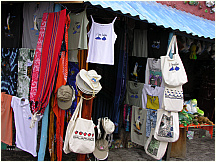 11puertoayora.jpg Souvenir shop goods for sale on Avenida Charles Darwin in Puerto Ayora, on Santa Cruz, Galapagos Islands |
|
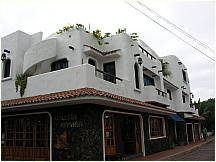 12puertoayora.jpg Art Gallery Aymara (Galleria Aymara) on Avenida Charles Darwin in Puerto Ayora, on Santa Cruz, Galapagos Islands |
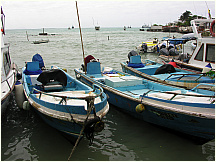 13puertoayora.jpg Skiffs at moorings in Puerto Ayora, on Santa Cruz, Galapagos Islands |
|
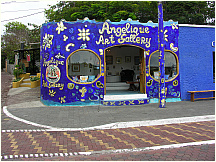 14puertoayora.jpg Art Gallery (Angelique) on Avenida Charles Darwin in Puerto Ayora, on Santa Cruz, Galapagos Islands |
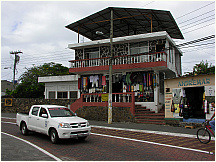 15puertoayora.jpg Souvenir shop with indigenous goods (artesanial indigenas)for sale on Charles Darwin Avenue in Puerto Ayora, on Santa Cruz, Galapagos Islands |
|
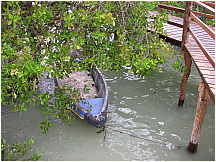 16puertoayora.jpg Skiff at moorings in Puerto Ayora, on Santa Cruz, Galapagos Islands |
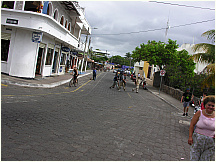 17puertoayora.jpg Souvenir shop goods for sale on Avenida Charles Darwin in Puerto Ayora, on Santa Cruz, Galapagos Islands |
|
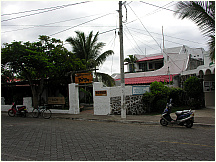 18puertoayora.jpg Discoteca La Panga and home of Galapagos Ocean Services on Avenida Charles Darwin in Puerto Ayora, on Santa Cruz, Galapagos Islands |
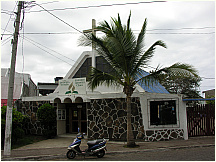 19puertoayora.jpg Seventh Day Adventist Church (Iglesia Adventista de Septimo Dia) on Avenida Charles Darwin in Puerto Ayora, on Santa Cruz, Galapagos Islands |
|
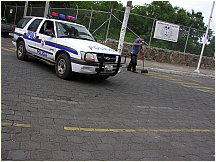 20puertoayora.jpg Police car patrolling on Avenida Charles Darwin in Puerto Ayora, on Santa Cruz, Galapagos Islands |
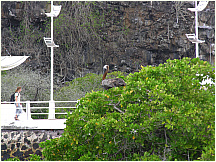 21puertoayora.jpg Pelican in mangroves near the main pier in Puerto Ayora, on Santa Cruz, Galapagos Islands |
|
|
Breakwater and harbor at Puerto Ayora, on Santa Cruz, Galapagos Islands |
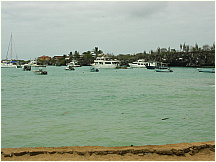 23puertoayora.jpg Harbor of Puerto Ayora, on Santa Cruz, Galapagos Islands |
|
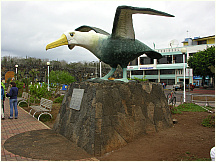 24puertoayora.jpg Sculpture of an albatross ready to take flight in Puerto Ayora, on Santa Cruz, Galapagos Islands |
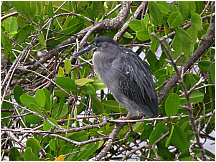 25puertoayora.jpg Lava Heron in mangroves at the waterfront in Puerto Ayora, on Santa Cruz, Galapagos Islands |
|
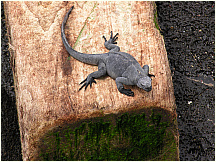 26puertoayora.jpg Marine iguana on driftwood along shore in Puerto Ayora, on Santa Cruz, Galapagos Islands |
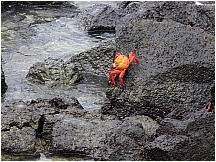 27puertoayora.jpg Sally Lightfood crab on lava rocks along shore in Puerto Ayora, on Santa Cruz, Galapagos Islands |
|
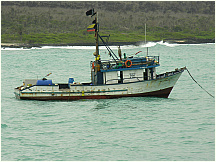 28puertoayora.jpg 28puertoayora.jpgCommercial fishing boat (longliner) in harbor of Puerto Ayora, on Santa Cruz, Galapagos Islands. Sign says Don't throw trash in the sea (No Botar Basura Al Mar) |
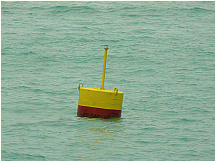 29puertoayora.jpg Navigation buoy near outer limits of anchorage area in harbor of Puerto Ayora, on Santa Cruz, Galapagos Islands. |
|
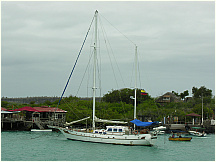 30puertoayora.jpg Sail ship SEA CLOUD in harbor of Puerto Ayora, on Santa Cruz, Galapagos Islands. |
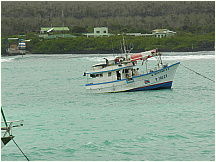 31puertoayora.jpg Commercial fishing boat (longliner) MARIANELA II in harbor of Puerto Ayora, on Santa Cruz, Galapagos Islands. |
|
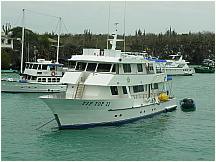 32puertoayora.jpg Cruise ship SEA CLOUD in harbor of Puerto Ayora, on Santa Cruz, Galapagos Islands. |
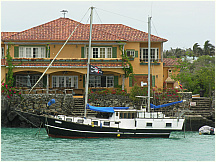 33puertoayora.jpg Sail ship PIRATA (Pirate) in harbor of Puerto Ayora, on Santa Cruz, Galapagos Islands. |
|
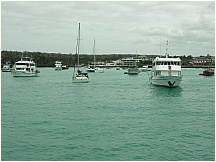 34puertoayora.jpg Cruise ships and yachts in harbor of Puerto Ayora, on Santa Cruz, Galapagos Islands. |
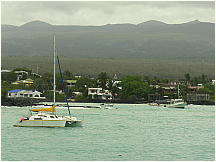 35puertoayora.jpg Sail boat catamaran SORIEL at anchor in harbor of Puerto Ayora, on Santa Cruz, Galapagos Islands. |
|
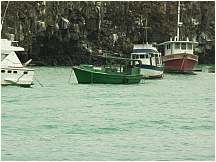 36puertoayora.jpg Commercial fishing boats SAN VINCENTE II and CARIBE II (longliners) in harbor of Puerto Ayora, on Santa Cruz, Galapagos Islands. |
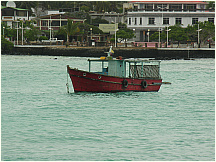 37puertoayora.jpg Commercial fishing boat B/P PETREL in harbor of Puerto Ayora, on Santa Cruz, Galapagos Islands. |
|
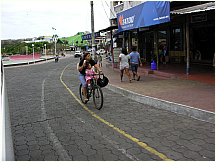 38puertoayora.jpg Woman and daughter on bicycle enjoying a soft ice-cream cone on Avenida Charles Darwin in Puerto Ayora, on Santa Cruz, Galapagos Islands |
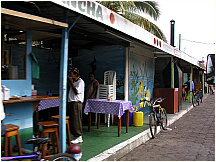 39puertoayora.jpg Local restaurants abound one or 2 blocks off Avenida Charles Darwin in Puerto Ayora, on Santa Cruz, Galapagos Islands |
|
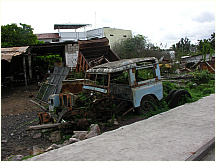 40puertoayora.jpg Messy yard on outskirts of Puerto Ayora, on Santa Cruz, Galapagos Islands. |
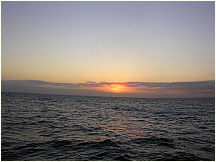 42puertoayora.jpg Sunset near harbor of Puerto Ayora, on Santa Cruz, Galapagos Islands. |
The Marine Iguana, Blue-footed Booby and The Galápagos land iguana are signature animals of the Galápagos islands. Sea lions in the Galápagos are somewhat tame, but very curious. Though the first protective legislation for the Galápagos was enacted in 1934 and supplemented in 1936, it was not until the late 1950s that positive action was taken to control what was happening to the native flora and fauna. In 1955, the International Union for the Conservation of Nature organized a fact-finding mission to the Galápagos. Two years later, in 1957, UNESCO in cooperation with the government of Ecuador sent another expedition to study the conservation situation and choose a site for a research station.
In 1959, the centenary year of Charles Darwin's publication of The Origin of Species, the Ecuadorian government declared 97.5% of the archipelago's land area a national park, excepting areas already colonised. The Charles Darwin Foundation was founded the same year, with its international headquarters in Brussels. Its primary objectives are to ensure the conservation of unique Galápagos ecosystems and promote the scientific studies necessary to fulfill its conservation functions. Conservation work began with the establishment of the Charles Darwin Research Station on Santa Cruz Island in 1964. During the early years, conservation programs, such as eradication of introduced species and protection of native species, were carried out by station personnel. Currently, most resident scientists pursue conservation goals; most visiting scientists' work is oriented towards pure research.
When the national park was established, approximately 1,000 to 2,000 people called the islands their home. In 1972 a census was done in the archipelago and a population of 3,488 was recorded. By the 1980s, this number had dramatically risen to more than 15,000 people, and 2006 estimates place the population around 30,000 people. In 1986 the surrounding 70,000 square kilometres (43,496 sq mi.) of ocean was declared a marine reserve, second only in size to Australia's Great Barrier Reef. In 1990 the archipelago became a whale sanctuary. In 1978 UNESCO recognised the islands as a World Heritage Site, and in 1985 a Biosphere Reserve. This was later extended in December 2001 to include the marine reserve.
Noteworthy species include: Galápagos land iguana, Conolophus subcristatus Marine iguana, Amblyrhynchus cristatus (only iguana feeding from the sea) Galápagos tortoise (Galápagos Giant tortoise), Geochelone elephantopus, known as Galápago in Spanish, it gave the name to the islands. There are many notable creatures including the Blue-footed Booby (Sula nebouxii), Galápagos Green Turtle, thought to be a subspecies of the Pacific Green Turtle, (Chelonia mydas agassisi), Vampire Finch (Geospiza difficilis septentrionalis), or the Sharp Beaked Ground Finch. The sea cucumber, is the cause of continuing environmental battles with fishermen over quotas of this expensive Asian delicacy (Holothuria spp.) There are four endemic species of Mockingbirds, the first species Darwin noticed varying from island to island; 13 endemic species of buntings, popularly called Darwin's finches, Woodpecker Finch (Camarhynchus pallidus) Galápagos Penguin (Spheniscus mendiculus) present because of the frigid Antarctic Humboldt Current, Flightless Cormorant (Phalacrocorax harrisi), the Great Frigatebird and Magnificent Frigatebird, Galápagos Hawk (Buteo galapagoensis) Galápagos Sea lions (Zalophus californianus), closely related to the California Sea Lion, but smaller.
Environmental threats include: introduced plants and animals, such as feral goats, cats, and cattle, brought accidentally or willingly to the islands by humans. Quick to reproduce, these alien species decimate the habitats of native species. The native animals, lacking natural predators on the islands, are defenseless to introduced species and fall prey. Some of the most harmful introduced plants are the Guayaba or Guava Psidium guajava, avocado (Persea americana), cascarilla (Cinchona pubescens), balsa (Ochroma pyramidale), blackberry (Rubus glaucus), various citrus (orange, grapefruit, lemon), floripondio (Datura arborea), higuerilla (Ricinus communis) and the elephant grass (Pennisetum purpureum). These plants have invaded large areas and eliminated endemic species in the humid zones of San Cristobal, Floreana, Isabela and Santa Cruz. Also, these harmful plants are just a few of introduced species on the Galapagos Islands. There are over 700 introduced plant species today. There are only 500 native and endemic species. This difference is creating a major problem for the islands and the natural species that inhabit them.
Many species were introduced to the Galápagos by pirates. Thor Heyerdahl quotes documents that mention that the Viceroy of Peru, knowing that British pirates ate the goats that they themselves had released in the islands, ordered dogs to be freed there to eliminate the goats. Also, when colonization of Floreana by José de Villamil failed, he ordered that the goats, donkeys, cows, and other animals from the farms in Floreana be transferred to other islands for the purpose of later colonization. Non-native goats, pigs, dogs, rats, cats, mice, sheep, horses, donkeys, cows, poultry, ants, cockroaches, and some parasites inhabit the islands today. Dogs and cats attack the tame birds and destroy nests of birds, land tortoises, and marine turtles. They sometimes kill small Galápagos tortoises and iguanas.
Pigs are even more harmful, covering larger areas and destroying the nests of tortoises, turtles and iguanas. Pigs also knock down vegetation in their search for roots and insects. This problem abounds in Cerro Azul volcano and Isabela, and in Santiago pigs may be the cause of the disappearance of the land iguanas that were so abundant when Darwin visited. The black rat (Rattus rattus) attacks small Galápagos tortoises when they leave the nest, so that in Pinzón they stopped the reproduction for a period of more than 50 years; only adults were found on that island. Also, where the black rat is found, the endemic rat has disappeared. Cows and donkeys eat all the available vegetation and compete with native species for the scarce water.
In 1959, fishermen introduced one male and two female goats to Pinta island; by 1973 the National Park service estimated the population of goats to be over 30,000 individuals. Goats were also introduced to Marchena in 1967 and to Rabida in 1971. However a recent goat eradication program has cleared most of the goat population from Isabela. The fast growing poultry industry on the inhabited islands has been cause for concern from local conservationists, who fear that domestic birds could introduce disease into the endemic and wild bird populations. The Galápagos marine sanctuary is under threat from a host of illegal fishing activities, in addition to other problems of development. The most pressing threat to the Marine Reserve comes from local, mainland and foreign fishing targeting marine life illegally within the Reserve, such as sharks (hammerheads and other species) for their fins, and the harvest of sea cucumbers out of season. Development threatens both land and sea species. The growth of both the tourism industry and local populations fuelled by high birth rates and illegal immigration threaten the wildlife of the Archipelago. The recent grounding of the oil tanker Jessica and the subsequent oil spill brought this threat to world attention. Currently, the rapidly growing problems including tourism and a human population explosion are further destroying habitats.
(Adapted from: Galapagos. (2008). From Wikipedia, The Free Encyclopedia)
This page last updated January 2015
Visit http://www.TechnologySite.org for free
photos and lists of inventions and technology. Visit http://www.ClimateChangeFacts.info for unbiased
information about climate change. Visit http://www.ClimateCooling.org for eye-opening
biased information on global cooling and climate change and visit http://www.OceanAssoc.com for fisheries
and oceans consulting services.